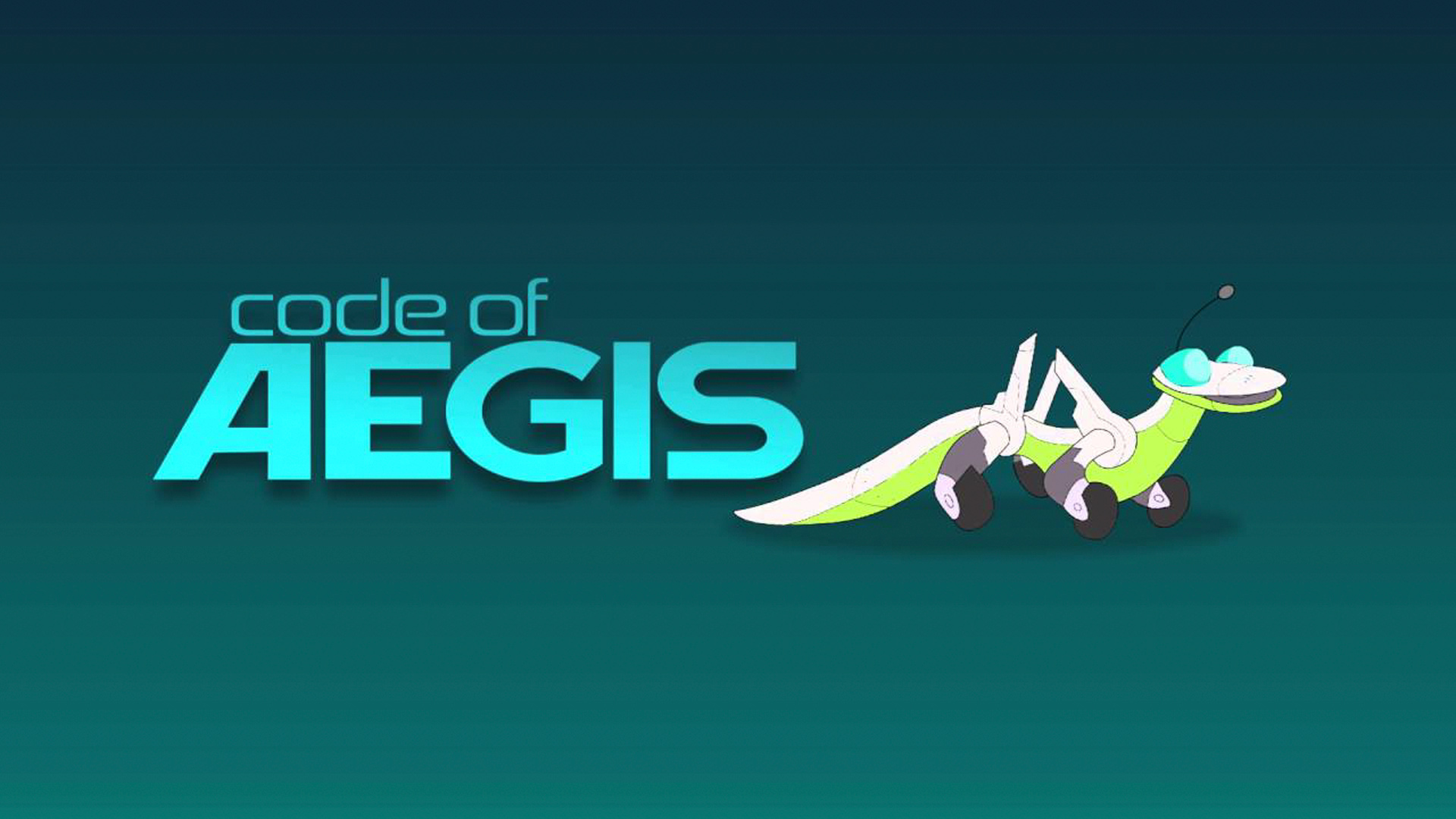UHCL students' video game 'Code of Aegis' wins educational award
February 26, 2019 | UHCL Staff

For video-game fanatics, getting paid to play is the ultimate dream. While University
of Houston-Clear Lake students majoring in digital media studies, didn’t actually get paid, they won a prestigious award for creating a video game
titled “Code of Aegis” at the Interservice/Industry Training Simulation and Education
Conference recently held in Orlando, Fla.
“We have been in partnership with Tietronix Software since 2014 on a Defense Advanced
Research Projects Agency (DARPA) grant,” said Professor of Instructional Design and
Technology Jana Willis. “DARPA is an agency of the U.S. Department of Defense responsible for emerging technology
used by the military. With their funding, we underwent a Phase 1 and Phase 2 development
stage, in which we made a prototype for a game focusing on robotics. It was approved,
and then we went on to fully develop the game.”
“Code of Aegis” was piloted in Deer Park, Pasadena, Texas City and Clear Creek Independent
School Districts in 2016. “Student data showed skill-development increase, academic
increase, and teacher feedback was very positive,” Willis said. “Teachers said they
enjoyed using the game as part of their curriculum.”
The game, Willis said, was deemed a great success. “We submitted it to the I/ITSEC
Conference and “Code of Aegis” won the Student Choice Award,” Willis said. She explained
that the game had been sent to sixth grade classrooms in school districts in Orlando
who volunteered to test the games submitted at the conference. “There were over 50
games competing, but the students liked ours best.”
Students majoring in digital media studies, instructional design and technology, computer science and management information systems also contributed work on the game’s graphics, along with two student programmers
from UHCL’s Management Information Systems Program who were hired by Tietronix. “One student, Timothy Cheng, went with us to the conference,
but several worked on it from the beginning,” said Anne Henry, clinical assistant
professor of digital media studies. “Timothy created a game design document, which
is an overview of the game and the coding involved, so he could pass along that information
in his role as marketer of the game at the booth event at the conference,” she said.
“His independent study, which I directed, was game marketing.”
Cheng, who received his master’s in digital media studies with a focus in gaming design
in December 2018, said that while he was a student at UH-Clear Lake, he’d been working
for Tietronix. “I was helping to create 3-D models and animations, and virtual and
augmented reality software while I worked there,” he said. “Working on this game design
document helped me hone in on my digital multimedia skills. I can do graphic design,
marketing videos, video production, and break down the game design and explain how
it was developed, and why it was designed the way it was.”
The game, Henry continued, was created with a graphic novel interface. “It uses storytelling
to engage students,” she said. “The learning focus of the game was to teach sixth-
to eighth-graders coding and get them interested in STEM-related subjects.”
In the process of playing, students would learn the basics of coding, starting with
the engineering process to coding and actually learn how to program a robot inside
the game. “In the end, students can take that program and plug it in another piece
of software and actually operate a real robot,” Henry said. “We take students who
think they can’t do anything with robotics and they actually operate a robot. It’s
a great sense of accomplishment and we hope it’s enough to make them at least consider
getting into a STEM-related field.”
The game’s next phase, Henry said, is game enhancement. “Upgrades to the game are
being made in the Serious Games and Innovation Lab in the Arbor building,” she said.
“We are adding audio and some other enhancements.”
Additionally, graduate students from the College of Science and Engineering have been lending their expertise to move the game’s platform from desktop to tablet.
“The game has been successfully moved to Android and will also be available on a Mac
tablet,” she said. “The enhancements they’ve added are substantial.”
Creating the game involved computer programmers, digital media experts, software engineers
as well as human factors experts from UHCL’s Psychology program. “It’s been a multidisciplinary
effort,” Henry said. “The last step will be to involve students to help develop a
marketing plan for the game. When the changes are complete, we will be marketing this
game ourselves.”
For more information about UHCL’s Digital Media Studies program, visit www.uhcl.edu/academics/degrees/digital-media-studies-ma.
About the Author:
Recent entries by
October 18 2022
Better technology transforms campus safety: Police Chief demonstrates SafeZone to students
October 14 2022
Student's skill with drones takes chicken turtle research to new heights
October 11 2022
Planting event to help UHCL restore native plants to campus, support environmental sustainability







